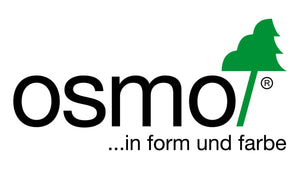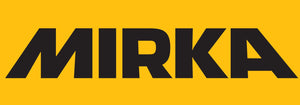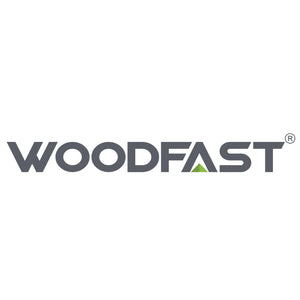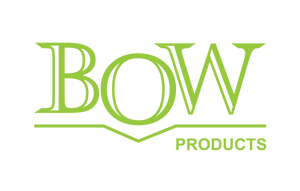When it comes to woodworking, the right sawblade can make all the difference. Whether you’re tackling challenging materials or fine-tuning your craft, understanding the essential elements (or should we say teeth and gullets?) of sawblade anatomy can elevate your woodworking skills. So buckle up, because we’re about to saw through the details and sharpen your knowledge!

Understanding Sawblade Anatomy and Applications
Key Parts of a Sawblade

- Plate: The steel disc forming the blade’s main body, providing stability and durability. Higher-quality plates are laser-cut for precision, while lower-quality blades are stamped, which can result in reduced accuracy and lifespan.
- Teeth: The cutting edges, often carbide-tipped for extended life and sharper cuts.
- Gullet: The space between teeth for chip removal and cooling.
-
Kerf: The width of the cut, determined by blade thickness:
Thin Kerf (~1.6 mm): Reduces material waste, ideal for low-powered saws.
Full Kerf (~3.2 mm): More robust, suitable for heavy-duty applications. -
Hook Angle: The angle of teeth relative to the blade centre:
Positive Hook Angle: Aggressive cuts, ideal for ripping.
Negative Hook Angle: Controlled cuts, commonly used for crosscutting and mitre saws. -
Tooth Count: Determines the smoothness and speed of cuts:
Low Tooth Count (e.g., 24): Fast, rough cuts for ripping.
High Tooth Count (e.g., 80-96): Smooth, fine cuts for crosscutting and finishing. - Expansion Slots: Prevent blade warping by reducing heat and vibration.

Blade Types and Recommendations
1. Ripping Blades
Features: Low tooth count (20-30) and wide gullets for fast, efficient cuts along the grain.
Best For: Cutting Solid wood with the grain.
Recommended Blades:
250 mm Heavy-Duty Rip Cut Blade
300 mm Industrial Rip Cut Blade
350 mm Industrial Rip Cut Blade
2. Crosscut Blades
Features: High tooth count (60-100) and Alternate Top Bevel (ATB) for clean cuts across the grain.
Best For: Cutting Solid wood across the grain.
Recommended Blades:
250 mm Industrial Timber Fine Cut Off
300 mm Industrial Timber Fine Cut Off
3. Combination Blades
Features: Moderate tooth count (40-50) with designs like ATBR (Alternate Top Bevel with Raker) for versatility.
Best For: Both ripping and crosscutting in general-purpose applications.
Recommended Blades:
254 mm Heavy-Duty General-Purpose Blade
4. Specialty Blades
Plywood & Melamine: High tooth count and special coatings for chip-free edges.
Recommended Blades:
200 - 250 mm Industrial Two Sided Melamine Cut Off Blade
600 - 300 mm Industrial Melamine Panel Blade
Metal & Plastic: Modified tooth geometry for cutting non-wood materials like aluminium and plastics.
Recommended Blades:
200 - 250 mm Industrial Aluminium/Non-Ferrous Metal Cut Off Blade
500 - 300 mm Industrial Aluminium/Non-Ferrous Metal Cut Off Blade
100 - 250 mm Industrial Plastic Cut Off Blade
200 - 300 mm Industrial Plastic Cut Off Blade
Solid Surface: Modified tooth geometry for cutting solid surface materials like Corian boards and similar materials.
100 - 250 mm Industrial Solid Surface Blade
200 - 300 mm Industrial Solid Surface Blade
5. General-Purpose Blades
Features: Balanced tooth count (40-50) designed for decent performance in both ripping and crosscutting.
Best For: Versatile use when frequent blade changes are inconvenient.
Recommended Blades:
Freud LU99 MP410 - 250 mm Premier Fusion General Purpose Blade
Freud LU2A 1700 - 250 mm Industrial General Purpose Blade
Freud LU2A 2100 - 300 mm Industrial General Purpose Blade
6. Dado Blades
Features: A stacked or wobble-style blade set designed to cut grooves and dados with adjustable widths.
Best For: Creating dados, grooves, and tenons in cabinetry and furniture making.
Recommended Blades:
Freud D300M08 / GLSD308 - 8" Safety Dado Set (affordable, high-performance option for general dado cuts)
Freud D508M / GLSD508 - 8" Super Dado Set (stacked dado for precise, clean cuts)
Freud DBOXM08 / GLSBOX8 - 8" Box Joint Set (specialised for precise box joints with flat-bottom cuts)
Common Tooth Shapes
1. Alternate Top Bevel (ATB):
Alternating bevels for clean crosscuts in wood and plywood.
2. Alternate Top Bevel with Raker (ATBR) / Alternate Top Bevel with Flat (ATBF):
A versatile design combining alternating bevel teeth with a flat raker tooth for clean cuts and efficient material removal.
Best For: Both ripping and crosscutting in general-purpose applications.
3. Triple Chip Grind (TCG):
Combines flat and trapezoidal teeth for durability and cutting hard materials like laminates.
4. Flat Top Grind (FTG):
Flat-topped teeth for fast ripping in solid wood.
5. Alternate Top/Alternate Face (AXL):
Precision cutting with alternating angles and faces for fine crosscutting.
6. Dual Triple Chip Grind (DTCG):
Heavy-duty cutting for dense materials like MDF.
Choosing the right sawblade doesn’t have to be a grind! By understanding key features and applications, you’ll be well-equipped to tackle any project with precision and efficiency. With the right blade in hand, you’ll always be a cut above the rest.
About Freud Sawblades
Freud Tools manufacture an extensive range of precise and high-tech circular saw blades, setting the highest standard in the industry. They are the largest global manufacturer of high-quality saw blades, combining engineering brilliance with manufacturing expertise.
One of Freud’s unique strengths is their in-house Tungsten Carbide production. This innovation ensures superior blade quality, featuring tip thicknesses up to 30% greater than standard blades for extended sharpening and longer product life.
Freud’s advanced tri-metal alloy, combining copper and silver, allows carbide tips to withstand extreme impacts, offering unmatched durability. Their patented coatings reduce friction, prevent corrosion, and keeps blades cool during use. Laser-cut steel plates and anti-vibration slots further enhance precision and stability, ensuring professional-grade performance.
Freud’s Unique Features
Freud sawblades incorporate innovative technologies that enhance performance and durability:
- TiCo™ Hi-Density Carbide Teeth: Custom carbide blend for sharper, long-lasting teeth.
- Perma-SHIELD® Coating: Reduces heat, resin build-up, and corrosion.
- Laser-Cut Stabiliser Vents: Minimise noise, vibration, and blade warping.
- Tri-Metal Brazing: Ensures shock resistance and flexibility.
- Silver I.C.E. Coating: Keeps blades cool, ideal for high-friction materials.
Experience the difference with Freud sawblades - engineered for excellence and built to last.
The Hammer Roo Team

















